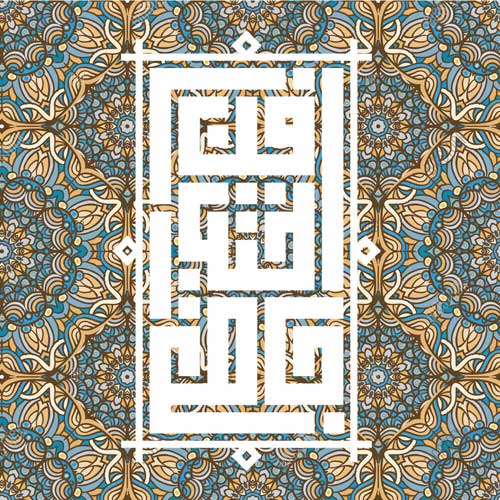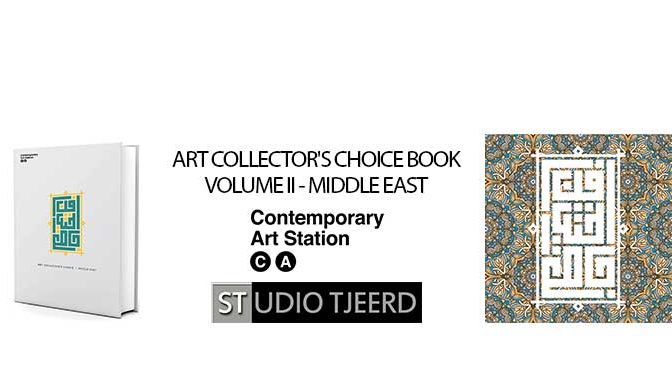Van alle modellen en ouder(s) heb ik nu de voorkeur mogen ontvangen of de foto online wordt gebruikt bij het interview of daadwerkelijk in het Art Collector’s Choice Book – Volume II – Middle East wordt gedrukt. Dat betekent dat de weg vrij is om de vragen van het interview te gaan beantwoorden.

ART COLLECTOR’S CHOICE BOOK
VOLUME II – MIDDLE EAST
Er zijn nu gezamenlijk met de curator drie foto’s uitgezocht die op de website zullen worden geplaatst, al zouden daar, voor het online gaan, nog wel wijzigingen in aangebracht mogen worden.
Ik denk dat we drie mooie foto’s voor bij het interview hebben gevonden. Deze moesten nog wel in een zeker formaat en resolutie worden aangeleverd.
Nu dus de taak om de vragen van het interview te beantwoorden.
En dat is toch nog wel een dingetje, want mijn moerstaal is Nederlands, terwijl het beantwoorden van de vragen in het Engels moet.
Inmiddels zijn alle vragen beantwoord en ingestuurd naar de curator met de vraag daarbij ook te letten op grammatica en spelling.
Gezien mijn vorige ervaringen met interviews en vooral ook de “houdbaarheid” van deze interviews (na verloop van tijd verdwijnen deze weer van het internet) zal ik hieronder de vragen en antwoorden neerzetten, zoals ze, als het goed is, zeer binnenkort online komen bij Contemporary Art Station.
Het interview begint met het voorstellen:
Tjeerd Doosje was born on april 8th 1966, Harderwijk, the Netherlands and is a selftaught and international awarded portraitphotographer and retoucher.
After he graduated from highschool he studied mathematics and chemistry at the Hogeschool Utrecht to become a teacher.
He’s still a mathteacher at a highschool in Almere and around 2010, he discovered portrait photography. On his highschool there was this make-up artist course and he did some mini photoshoots with the pupils. He liked this so much that he wanted to start his own photostudio in 2016.
His photos have been finalist for The Celeste Contemporary Art Prize 2016 (London) and twice in The Global Art Awards 2018 (Dubai) and 2020 (Shanghai).
His photos have been runner up (nominated) for the Fine Art Photography Awards (2018, 2019, 2020).
He also received several international prizes among them Andrea Mantegna Prize (Mantova, 2017) and International Prize Velázquez (Barcelona, 2019).
His work was exhibited both digital and physical in galleries and artfairs, among them M.A.D. Gallery (Milan, Italy, 2018-2020), Musée du Louvre (Paris, France, 2015), Le Carrousel du Louvre (Paris, France, 2018), Artexpo New York (New York, USA, 2019), Milano Fashion Week (Milan, Italy, 2020).
Also publications in artbooks and magazines among them The First Berliner Artbook (2018, 2019, 2020, 2021), Inspiration: International Artbook (2016, 2017, 2018), Zoom Magazine (2014, 2018), Circle Spotlight Magazine (2017) and CanKids Magazine (2021).
Dan de daadwerkelijke vragen:
1. What’s your background?
By profession I’m a mathteacher at a high school. Being teacher at our school I was often asked to photograph events.
But what truly made me switch to the art of photography was the fact that at our school there was a make-up course with mini-photoshoots with pupils/seniors.
Instead of my “normal” profession as a math teacher, when everything is going through the brain and mind (logical thinking, not emotional, left cerebral hemisphere), photography drills to the artistic and emotional part of me (right cerebral hemisphere). Photography is, to me, a way to average this two parts and make me a whole human being.
Beside that: photography and math are interlinked (the technical part for example the aperture and the laws of light).
2. What does your work aim to say?
In my opinion art has to move people. You can like it, but it can also bring a sort of disgust to people. Anyhow art has to provoke a certain emotion to people.
Many artists label their art with a name for the piece of art they’ve made. Beside that I’m not that creative to label every photo with a certain name, I think that giving a name to a piece of art also pushes the viewer into a certain direction. I want my audience to be viewing the image completely neutral, with no hints from my side. Portrait photography is just as that: depicting a person in a photo. With most of my photos the eyes are the most important aspect of the image, as it is the mirror of the soul. What do people see in these eyes? Can they imagine what is behind the face, what drives people and the portraited one in particular? What is the subject thinking? All in all, art is just a matter of ones own perspective, so what tells art about yourself?
But first of all it’s important that the depicted person and her/his family and friends can see him/herself in the photo just the way he/she is, or as one mother once wrote and describes: “I’m happy with your way of looking to people through the lens. You bring out the finest and deepest and still stay in purity. My compliments!”
The core of my art is, as I mentioned above, trying to capture the purity of the person. In the preparation of the shoot, I try to figure out what moves that particular person. Sometimes we’ve a so-called moodboard with images to give an idea for what the photos of the shoot could look like. But I noticed by myself that this can block creativity during the photoshoot and that is important to me. I want to feel that connection with my model, that we’re on the same page and in the same flow. Than the most interesting photos will occur. Or as a model told me lately: “I like to shoot with Tjeerd, because he gives me the freedom to explore and be creative instead of a doing it the way the photographer wants me to do it”.
I always take a lot of props with me, in cardboard boxes, and models can choose the props they like to use, or I give them an idea which prop could be suitable. A makeup artist can also contribute with ideas, so that it is truly a collaboration with some great images as a result.
Most of the models I’ve had a photoshoot with, are not very experienced models, so I can capture the true person instead of the, forgive me the phrase, “acting” person.
3. How does your work comment on current social or political issues?
I have no intention to discuss or comment any social or political issues with my work. If anyone would see such a relationship, it’s simply coincidence.
4. Who are your biggest influences?
The first photographer that pops into my mind is Lindsay Adler, a beauty and fashion photographer from New York. I have followed her for almost a decade now and I find her a very inspiring photographer, not only because of the images she delivers and the ideas she’s showing, but also because of the personality she has. I was lucky enough to follow a one-day workshop in the Netherlands a couple of years ago and also in real life, she’s a very engaging person. I like her concepts and the way she works things out, often using materials and props that are selfmade. Also her instructions to the models as well as the editing of the images is a great inspiration to me.
I also am inspired by the American photographers Brooke Shaden and Peter Hurley, by the British photographer Gavin Hoey and the Dutch photographer Frank Doorhof.
For the postprocessing part, so the editing of images, I’m influenced by, again, Lindsay Adler, Unmesh Dinda (piximperfect on YouTube), Pratik Naik and Aaron Nace.
During the editing I’m also influenced by music, mainly the scores of filmmusic, but also from electronic music (Vangelis, Jean Michel Jarre). From the music artists Jon and Vangelis comes my tagline: “Shine for me and I’ll shine for you”.
Considering lighting in the photographs, I’m also inspired and influenced by the Old Dutch Master of painting: Rembrandt.
5. How has your art evolved over the years?
In the core nothing really has changed, but I find that certain parts are more “a part” of me, right now. During a shoot to me it is and always will be that there has to be chemistry between the subject and me. So I take a certain amount of time to ease – if necessary – the model before we get shooting. Afterwards it is also a bit easier to select the images I want to edit and retouch. The retouching itself, although I have had so much practice now, still takes a lot of time, but some parts are easier because I know how to tackle them. Yet an average retouch/edit costs me about one and a half to three hours.
I do, however, think that my work have changed a bit also because of once in a while stepping out of my comfort zone, like shooting fashion, but I always will search for that particular shot that is different to other photos (from other photographers).
6. What does art mean to you?
As mentioned before, photography as my art, makes me a whole human being.
Seeing art always moves me, whether it’s a photograph, a painting, a sculpture.
I think it’s an important part of your development as a human being.
Being a perfectionist it’s sometimes hard to evaluate your own work, but every once in a while, I step back and watch my own work. At those moments I enjoy the art we’ve (my models/parents and myself) made. The collaboration between different persons with different (cultural) backgrounds bringing together in a photo satisfies me.
7. What’s the most valuable piece of art to you?
I cannot tell wich photo is the most valuable piece of art. Every single photo stands for itself, but it is also the way the photograph was made, with all the background stories behind it.
In my genre of photography it could also mean that I would like one model better / more beautiful than the other model, which is not the case. Every person is beautiful in him/herself. Perhaps the most value lies in the fact that I was able to work with the model and that we were able to take a special photo together. In that respect I feel privileged and always honored that I have been able to put the person in the picture.
8. What’s next for you in the future?
Future will tell, of course. I would definitely like to have my own photostudio and more paid photoshoots, but considering the time we’re living in today, with the main character COVID-19, it’s hard to tell whether this will be possible. But dreams sometimes come true.
Zoals te zien was het nogal een bevalling om al de vragen beantwoord te krijgen.
Bij dit interview worden dus nog drie foto’s geplaatst.
Wordt vervolgd.
Eerdere berichten over deze publicatie
Een dilemma
Publicatie een feit
Betaling gedaan
Verzoek ingewilligd
Verzoek tot plaatsing
Reminder ontvangen
Uitnodiging ontvangen




























